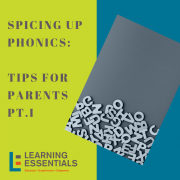Scrabble as an Instructional Tool
April 13th is the official day to celebrate every word-lover’s favorite board game—Scrabble! This beloved game-cabinet staple has been around since the 1930s, but its relevance in the classroom is eternally apparent. Not only Scrabble, but countless other board games and childhood favorites, can also be used to support learning and spur student engagement. Browse the ideas below to see how Scrabble could be incorporated into your own learning environment, whether it be in the classroom or at home.
Scrabble:
- Use the letters as a form of equity sticks or calling sticks. Each student will be assigned a letter. When that letter is drawn, that student is selected to participate, read aloud, share their example, etc. Use the letters to correspond to students’ names. Similarly to calling sticks, if the teacher or another student draws the letter “D,” the next participant/classroom speaker’s name must start with or include the letter “D.”
- Use the letter pieces to spell sight words for students. They can recreate the sight word from memory when the letters are scrambled up. Conversely, to challenge the strong spellers or provide enrichment, teachers may want to spell a sight word incorrectly and ask the student to remove or swap out the incorrect or misplaced letter.
- Split students into groups and provide them with a pile of letters. Groups must race to sort the consonants and vowels into two different piles. The first group with everything sorted correctly wins!
- Provide students with two vowels and three consonants. Then challenge them to see how many words they can spell with their letters by rearranging the squares.
- For students just learning the alphabet, provide them with several letters and an alphabet reference strip if needed. Ask students to then put the letters in alphabetical order, skipping any letters that are not part of the sequence they were given.
- Divvy up the letters to small groups of students. Put a photo up on the board to represent a spelling word, like “table,” for example. Then ask students to raise their hands if they think their letter is involved in the spelling of the word. If so, then as students with hands raised to arrange themselves in the correct order to spell that word.
- Set up a “photo album” of images that contain consonant blends or digraphs that students have been learning about. For each photo, ask students to place the Scrabble squares of the letters that form that digraph or blend. For instance, if the photo depicts a flower, the student would place “f” and “l” on the picture; a stop sign would mean that “s” and “t” should be placed on the image.
- As an extension activity, or to challenge students with strong phonics skills, provide them with a recorded sound, like “ew.” Then ask them to come up with all of the vowel/consonant combinations that could compose a word with that vowel sound: blue, too, crew, shoe, bruise, two, flu, etc. The key for this activity is that students begin to recognize the different combinations of letters that can make the same or similar sounds.










